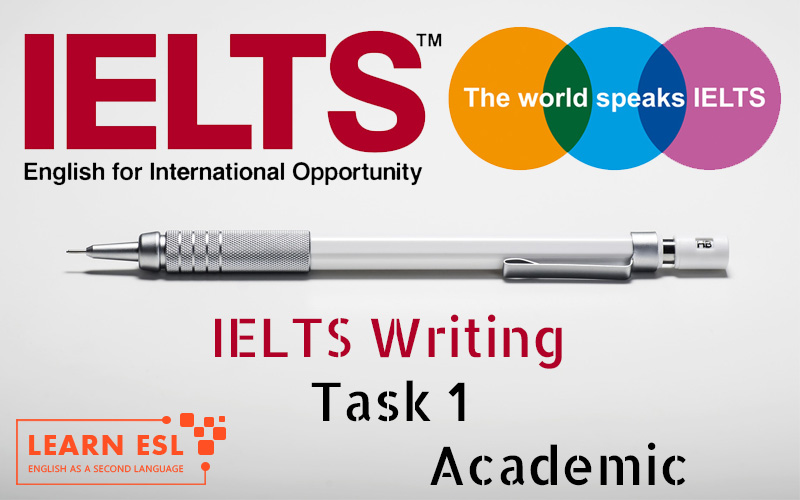
IELTS is one of the leading tests in order to get into an English-speaking university or professional registration, or for the purpose of migrating into an English speaking country. The problem for a lot of people is the confusion between IELTS Academic and IELTS General, they aren’t sure, which one to take, whether IELTS Academic or IELTS General. Initially, I am going to differentiate between IELTS Academic and General then explore IELTS writing task 1 test tips in detail.
Difference Between IELTS Academic and General Tests
The IELTS test has 4 parts:
Writing task 2, listening and speaking are the same for both IELTS Academic and IELTS general. The only difference between the two test is writing task 1 and reading.
Writing task 2:
In writing task 2 you will be given an essay question to answer within 40 minutes by writing at least 250 words.
Listening Part:
In the Listening test, you will hear 4 audio recordings and have to answer 40 questions. It lasts between 30-40 minutes.
Speaking Part:
In the Speaking test, you will be interviewed by an examiner. This test includes 3 parts: the interview, the short presentation, and the discussion. It last between 11-14 minutes.
IELTS Academic or IELTS General: Reading
Academic
3 long passages increasing in difficulty Academic style texts (journal articles, textbook extracts) Texts related to academic topics such as science, history, sociology.
General
4 short passages increasing in length and difficulty more general /everyday style texts. Texts related to social survival (advertisements, notices etc.); workplace survival (job descriptions, employment contracts etc.); general texts (newspapers, magazines, travel brochures etc.)
You get an hour to complete both of these reading tasks (50 minutes of reading time and 10 minutes to transfer your answers onto your answer sheet). Both tests include 40 questions in total.
Writing Task 1 General
You will be given a task of writing a letter to someone you don’t know or a semi-formal letter to someone you know formally or also an informal to a friend or family member.
You get 20 minutes to complete both of these tasks and must write at least 150 words for each.
IELTS Writing Task 1 Test TIPS (Academic)
In Writing task 1 of academic you will describe and analyze data in one of the following:
- Bar chart
- Line graph
- Pie chart
- Table Diagram
So, they provide you an info graphic or information graphic visual with whatever information in it and ask you to covert it into words and sentences.
Here you need to concentrate what information to pick out and include it into your report. Because here we are talking about a report, it’s very important to know that a report is not an essay. It has very different structures and it’s different requirements.
In this writing task your target is a minimum is about a minimum of 150 words to 190 words.
Introduction:
Your introduction is going to be very short 1 or 2 sentences. Write in the introduction what are you looking at, it can be a graph, chart, or a table diagram.
This table shows,this table demonstrates, or this diagram shows or illustrates. This is how you are going to start your intro.
Remember in your entire report for task 1, there should never be the pronouns like I, me or we because this is not about you, this is about the infographic. And because this is not about you there is opinion, you will not reach any conclusions, you will not try to make an analysis, you will not try to understand what’s going on and you will make any inference, prediction or explanations.
All you need to know is going to show what is in the infographic and write just the fact and try to write the introduction very simple and very straightforward. You don’t need a very fancy language, you don’t need very high-end vocabulary but you need to have good sentence structure and give the information that you see.
The Body of Writing Task 1
Before going to tell you about the body, remember there isn’t any conclusion in task 1, because you are not reaching any conclusion, you are not explaining anything. All you are going to do is giving information. With a short introduction and 1 or 2 body paragraphs.
Graphs:
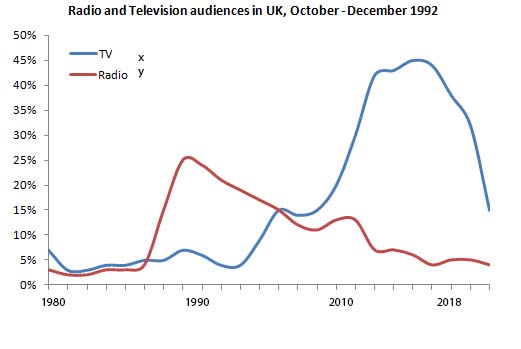
Always pay attention to your axes, the X an Y axes, what is the information in the X and what is the information in the Y and also what are the ranges. let’s suppose you are talking about the time from 1980 to 2018, you have 38 years range, make sure to mention the range and mention all the things which are in the range.
Highs and Lows / Peaks and Valleys
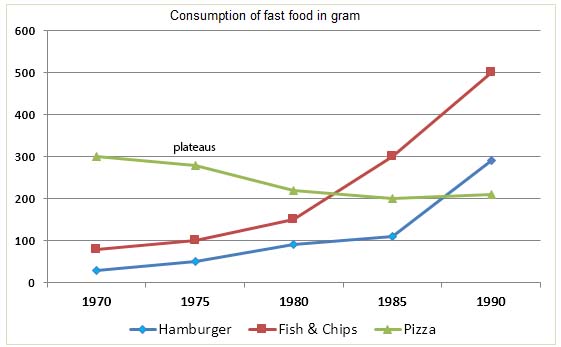
When you have ups and downs in a graph, pay attention to the peaks, pay attention to the valleys. If it’s very steady peaks and valleys, you can mention the stability aspect of it.
Don’t forget to mention the plateaus too. For example, when the line in the graph is going up in the middle has many plateaus, mention it according to the axis.
This kind of graph usually is about time or increasing or decreasing sale percentages or the range of anything.
Patterns and Trends
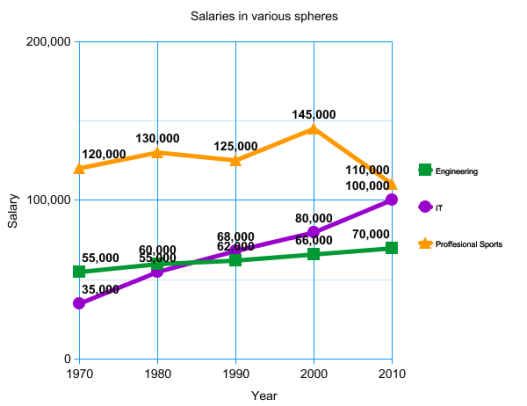
When you are comparing a number of things, what are the patterns also things which are trending up or trending down. Some can trend up and some can trend down.
When comparing things, keep them very general, let suppose if you are comparing 5 things and you find 4 of them share a pattern, don’t talk about each of them individually, put all 4 into one lump group.
For example, these four countries from the West all increasing their military spending and the one country in the south is decreasing.
Anomalies and Exceptions
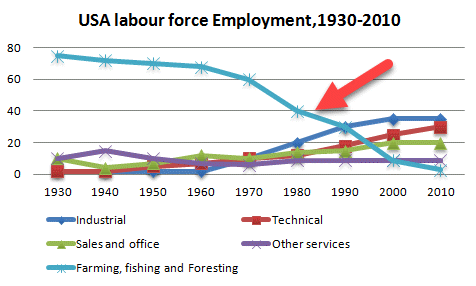
What is an anomaly? It’s something out of the ordinary. If you have a pattern that everybody is going up and only 1 going down, that one is the anomaly, it’s outside the pattern or trend.
Here exceptions is another word to say anomaly, something that goes against the trend. So, when you have this kind of exceptions, give details, any specific number or whatever their variables are to talk how it is the exception or what is the exception, what is the change of direction or what is the pattern that something is following.
Tables

If you have tables, it has columns and rows. Pay attention to the headings in the columns and in the rows, because it gives you important information that you could put that into your introduction. If it’s very important what is going on, you can put that in the body as well.
Diagram Process (Start, End, Similarities and Differences)
If you have a diagram in writing task 1. A diagram usually shows a process of something or a life cycle of something. Suppose a life cycle of an ant.
Initially, what you are going to do is, identify the start of the cycle or the process and you are going to identify the finish or the end of the process and you want the major steps along the way.
Remember you don’t need to write everything in a detail, because it’s only 170 words. So don’t try to include everything, just the major steps.
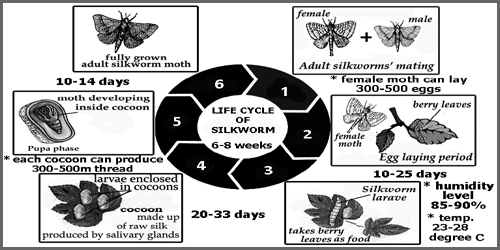
For instance, a mother moth lays eggs, the eggs hatch into larvae, when six weeks pass by the eat the leaves, the larvae start building their cocoon around themselves. Then by the passing of time the cocoons opens the wings come out.
Just mention the milestones or the major steps from the diagram, don’t go in a very detail.
Similarities and Differences
When you are comparing things, focus on the similarities and differences. In comparing you are going to spend more words on the differences than you are on the similarities. The similarities are general and the differences are more detailed.
Important: You don’t need to include everything, because you don’t have space, time and also it’s not important to include everything. Just include the major steps and points.
How to Split the Paragraphs
One of the problems people have is they don’t know when to switch to a new paragraph. Indeed there isn’t any specific rule, but this is just a suggestion that I am going to tell you.
When you have just one chart, table or pie chart etc, you can split it into two ways. In the first paragraph look at all the similarities, all the patterns and all the things which are basically similar.
In the second paragraph focus on the major differences the anomalies and exceptions. This is the easy way to split the paragraphs in the IELTS writing task 1 academic.
Another way, when you have 2 or 3 different things in a table or graph. In the first paragraph focus on one thing like you are comparing two countries, in the first paragraph focus on the first country what it’s doing in the graph, second paragraph focus on the second one.
If you have two charts, it’s much easier. In the first paragraph talk about the chart one and in the second paragraph talk about the chart two with slight comparisons as necessary.
Or in the first paragraph compare the two in terms of all the similarities all the trends and in the second paragraph look at all the major differences.
Remember you are going to make some sort of connection and don’t go beyond what is given to you and don’t bring your ideas into it.
If you are talking about a diagram that shows a life cycle, in this case I recommend one paragraph. Start and include the major steps and the milestones and finish. You don’t need two paragraph because there is no way to split, because a life cycle is a one process thing.
When you have don’t the introduction and the body, you don’t need the conclusion because you have written everything and the information has been delivered and that’s it. Go to your essay in the task 2 and good luck with that.
If you have any question or recommendation, please put that in the comment section below.
